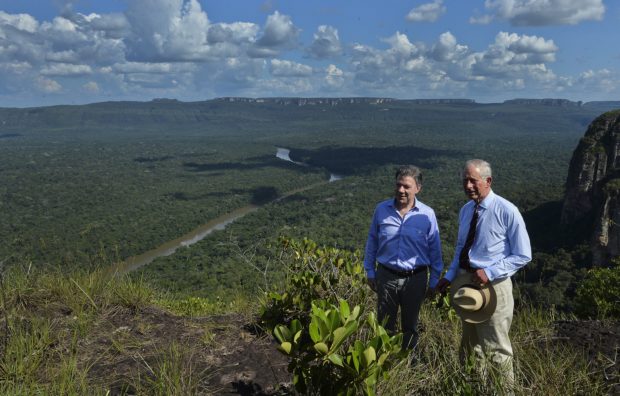Colombia’s Chiribiquete National Park now in UNESCO’s World Heritage List

Colombia’s delegation in the United Nations Educational, Scientific, and Cultural Organisation (UNESCO) 42 session of the world heritage meetings in the Bahraini capital Manama are seen celebrating on July 1, 2018. The meeting which runs until the 4th of July 2018 inscribed today Turkey’s cultural site, Göbekli Tepe, Germany’s cultural site, Naumburg Cathedral, Canada’s Pimachiowin Aki, mixed natural and cultural site, and Colombia’s Chiribiquete National Park – “The Maloca of the Jaguar”. / AFP PHOTO / STR
Manama, Bahrain – Colombia’s massive Chiribiquete National Park has made it to UNESCO’s World Heritage List, the United Nations body announced on Sunday.
“Congratulations,” the UN Educational Scientific and Cultural Organization announced on Twitter.
With an area of 2.7 million hectares (6.7 million acres) covering five Amazonian municipalities in the southern Guaviare and Caqueta regions, Colombia’s largest natural park has rich biodiversity and is a sacred place for indigenous people.
This is the ninth world heritage listing in Colombia, the second most biodiverse country in the world after Brazil.
Colombian President Juan Manuel Santos said that his government will expand the protected territory in the area.
Article continues after this advertisement“Tomorrow we will be in the park to further expand and protect our biodiversity #World Heritage,” he wrote on Twitter.
Article continues after this advertisement
Prince Charles (R) of Wales and Colombian President Juan Manuel Santos visit the National Park of Chiribiquete in the Department of Guaviare, Colombia on October 30, 2014. The British Royals are in Colombia on a five-day official visit. AFP PHOTO/Cesar Carrion / AFP PHOTO / CESAR CARRION
The territory, which is considered a protected area since 1989, will be expanded by 1.5 million hectares on Monday, according to the president’s office.
For decades, war overshadowed the treasures the park holds.
But the peace agreement signed in 2016 with the then communist FARC guerrilla led to the discovery of the large tepuis mesas hundreds of meters (yards) high and wide that house more than 75,000-year-old cave paintings.
The area is home to creatures such as the Chiribiquete emerald hummingbird, seen as the only endemic species in the Colombian Amazon, as well as jaguar – the big cat only found in the Americas that is threatened by the loss of its habitat due to deforestation. /kga